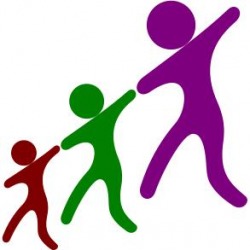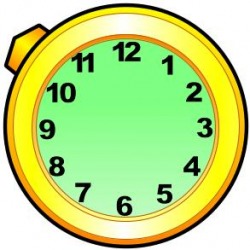Multi-Sensory Referencing and Objects Of Reference

Mutli-Sensory Referencing is not a single technique but rather an approach to raising the awareness of self in time and space comprising several techniques for use with people of any age (from 2 - 92) who are experiencing PMLD.
The different techniques involved are explored and explained and the implementation of the scheme is covered. Where there is disagreement amongst professionals working in this area, both sides of the debate are presented so that participants can decide for themselves.
The different techniques involved are explored and explained and the implementation of the scheme is covered. Where there is disagreement amongst professionals working in this area, both sides of the debate are presented so that participants can decide for themselves.
Description Of Course

The Multi-Sensory Referencing (MSR) course outlines what can be achieved using MSR techniques (which include OOR) with learners experiencing PMLD.
The day begins with an outline of forms of communication placing MSR in an approaches-to-communication continuum and then continues with an exploration of where MSR fits into a Total Communication Environment.
Multi-Sensory Referencing is explained and examples are provided of approaches using this group of techniques.
Multi-Sensory Referencing techniques include Sensory Cueing and Environmental Engineering: both are explained with clear and practical examples. Stafff members often are confused about the difference betweeen Sensory Cueing and Objects Of Reference: the course explains the difference such that any confusion is eliminated.
The afternoon session is devoted entirely to the exploration of the Objects Of Reference technique as a part of MSR providing a guide to their implementation and development in any establishment as a part of MSR. It covers the which, what, when, why, who and how of OOR delivery and support.
The day begins with an outline of forms of communication placing MSR in an approaches-to-communication continuum and then continues with an exploration of where MSR fits into a Total Communication Environment.
Multi-Sensory Referencing is explained and examples are provided of approaches using this group of techniques.
Multi-Sensory Referencing techniques include Sensory Cueing and Environmental Engineering: both are explained with clear and practical examples. Stafff members often are confused about the difference betweeen Sensory Cueing and Objects Of Reference: the course explains the difference such that any confusion is eliminated.
The afternoon session is devoted entirely to the exploration of the Objects Of Reference technique as a part of MSR providing a guide to their implementation and development in any establishment as a part of MSR. It covers the which, what, when, why, who and how of OOR delivery and support.
Course Objectives

Course Participants will be able to …
- state what is meant by a Total Communication Environment;
- outline the techniques comprising Multi-Sensory Referencing;
- understand the concept of environmental engineering and how it relates to Learner motivation;
- differentiate between Sensory Cueing and Objects Of Reference;
- understand the approaches and pitfalls in the implementation of an OOR scheme;
- comprehend the five stages of development in an OOR scheme;
- implement MSR techniques in their educational environment.
What level of ability does the course address?

While aimed at Learners experiencing Profound and Multiple Learning Difficulties the skills learned on this course may be applied to SLD or those learners with autism. This course is suitable whether working with children or adults.
Skill level of attendees

People attending this course require no prior knowledge in order to benefit, although experience in working with Learners experiencing PMLD is preferable.
Requirements

There are no specific requirements for people attending this course. Attendees may wish to bring a pen and some paper to take notes although the presentation PowerPoint will be made available to all those attending.
Course Outline

Participants should aim to arrive between 8:30 and 9:30 for registration and tea/coffee. The course will commence at 9:30 prompt and the presenter will not delay for late comers. Times below are an approximate guide to the day and may vary considerably. Where the course is closed to outsiders, times may be decided by the booking agency.
At the close of the course at 4:00 pm, participants may leave or stay for further tuition dependng on the requirements of the venue and at the discretion of the course tutor. Additional assistance and support will be given to course attendees by e-mail in the weeks following the course as necessary.
The course will describe and detail Multi-Sensory Referencing and cover its implementation as well as demonstrating a variety of ideas for its use in the Special Needs environment. Course participants will be guided through many of the techniques involved in this approach with particular reference to both Sensory Cueing and Objects Of Reference. By the close of the course, participants should have a good idea how to begin to implement a MSR scheme in their place of work or home.
08:30 Arrival, Registration. Tea and Coffee
09:30 Introduction and Forms of Communication
09:45 Total Communication Environments
10:30 Break
10:45 Multi-Sensory Referencing
11.15 Sensory Cueing and Environmental Engineering
12:00 Lunch
13:00 Objects of Reference
16:00 Q & A Close of Course
After the course closes, there may be time for further study (depending on the requirements of the venue and at the discretion of the course tutor) for those that wish to remain. However, this will be purely voluntary and all course attendees are free to leave at the official close of course at 4:00.
At the close of the course at 4:00 pm, participants may leave or stay for further tuition dependng on the requirements of the venue and at the discretion of the course tutor. Additional assistance and support will be given to course attendees by e-mail in the weeks following the course as necessary.
The course will describe and detail Multi-Sensory Referencing and cover its implementation as well as demonstrating a variety of ideas for its use in the Special Needs environment. Course participants will be guided through many of the techniques involved in this approach with particular reference to both Sensory Cueing and Objects Of Reference. By the close of the course, participants should have a good idea how to begin to implement a MSR scheme in their place of work or home.
08:30 Arrival, Registration. Tea and Coffee
09:30 Introduction and Forms of Communication
09:45 Total Communication Environments
10:30 Break
10:45 Multi-Sensory Referencing
11.15 Sensory Cueing and Environmental Engineering
12:00 Lunch
13:00 Objects of Reference
16:00 Q & A Close of Course
After the course closes, there may be time for further study (depending on the requirements of the venue and at the discretion of the course tutor) for those that wish to remain. However, this will be purely voluntary and all course attendees are free to leave at the official close of course at 4:00.
Screenshots from the MSR course. Click to enlarge.
Click On the Symbol to return to the top of the page

Click on the up key symbol to the left to return to the top of this page.






